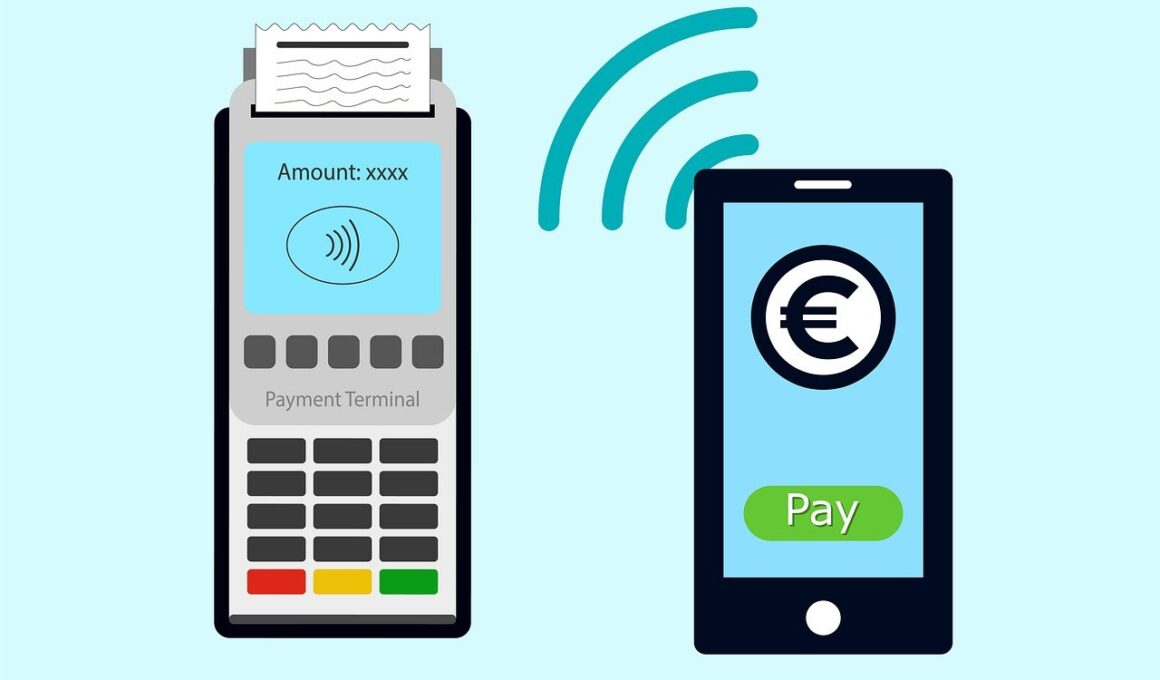A Comprehensive Guide to NFC Payment Features in Wearable Devices
Wearable technology has revolutionized the way we live, exercise, and conduct transactions. One of the most remarkable advancements in this arena is the integration of NFC (Near Field Communication) payment features in wearable devices. NFC technology enables seamless transactions through direct communication between two devices at close proximity. This electronic communication simplifies the payment process, making it easier for users to make purchases without needing their smartphones or wallets. The incorporation of NFC in wearables has significant implications for fitness enthusiasts, who can now track their workouts and make purchases simultaneously. As the trend toward cashless payments continues to accelerate, wearables equipped with NFC capabilities will likely become increasingly prevalent in everyday life. It is essential for consumers to understand both the advantages and limitations of NFC technology in wearables. By doing so, they can make informed decisions when purchasing devices and maximize their functionality. In this guide, we will explore various aspects of NFC in wearable devices, including key features, security concerns, and the future of this innovative technology.
One of the primary advantages of NFC payment features in wearable devices is convenience. Users can effortlessly make payments by simply tapping their wrist or on the designated point-of-sale terminal. This ability to conduct transactions quickly is particularly beneficial for individuals engaged in physical activities, where fumbling for a wallet or phone is counterproductive. Imagine finishing a workout session and grabbing a smoothie at your gym’s café without having to search for your purse! Moreover, wearables equipped with NFC payment capabilities typically come with enhanced security features to protect users’ financial information. The cryptographic technology behind NFC transactions ensures that sensitive data is not transmitted, reducing the risk of fraud. In addition, every transaction requires authentication, such as a PIN or biometric verification, adding another layer of safety. As a result, users can enjoy the convenience of cashless payments while maintaining peace of mind regarding their financial security. This combination of ease and safety drives the growing demand for NFC-enabled wearables across various demographics. Consumers are not only looking for practicality but also for technology that aligns with their lifestyle and values.
The Features of NFC Payment in Wearable Devices
The features integrated into wearable devices with NFC payment capabilities significantly enhance the user experience. For instance, smartwatch manufacturers often incorporate health and fitness tracking features alongside NFC payments. This allows users to monitor their physical activities while enjoying the convenience of mobile payments directly on their wrists. Another noteworthy feature is the wallet functionality available in these devices. Users can store multiple credit or debit cards, making it easy to switch between accounts for various transactions. This versatility is important for consumers who prefer to keep their options open when making purchases. Additionally, many NFC-enabled wearables offer integration with popular digital wallet applications such as Google Pay and Apple Pay. This compatibility enhances flexibility and allows users to manage their transactions more effectively. Users can simply link their existing payment information to their wearable and enjoy the benefits without requiring any additional setup. These combined functionalities make NFC wearables appealing to tech-savvy consumers seeking to minimize their reliance on traditional payment methods.
Security is a primary concern for consumers using NFC payment features in wearable devices. Manufacturers recognize this and have implemented a variety of security protocols to safeguard users’ data. One common method is tokenization, where actual account numbers are replaced with unique identifiers. This makes it nearly impossible for hackers to access sensitive information during transactions. Additionally, many NFC-enabled devices adopt multi-factor authentication methods to authenticate payments. Users might need to verify their identity through biometric sensors such as fingerprints or facial recognition before a transaction is processed. These layers of security significantly reduce potential fraud risks, fostering greater trust in NFC technology among users. Moreover, regular software updates are essential for maintaining security. Wearable manufacturers often release patches and updates to address vulnerabilities that may be discovered after launch. Users should stay informed about these updates and install them promptly. Ultimately, understanding these security features empowers consumers to make informed choices when selecting wearables, enabling them to reap the rewards of NFC technology while keeping their personal information safe.
The Future of NFC Wearables
The future of NFC technology in wearable devices appears promising, with continuous innovations designed to enhance user experiences. As the demand for wearables increases, companies are focusing on improving the capabilities of their devices. Upcoming trends may include the incorporation of biometric authentication systems that enhance security while simplifying user experience. Imagine not even needing to input a PIN since your device could recognize your unique biometric data to approve transactions. Furthermore, as contactless payment methods gain traction, new applications may arise beyond the realm of retail. For instance, the integration of NFC technology in transportation systems could alleviate the need for physical tickets, allowing commuters to pay effortlessly. Other potential applications could include loyalty programs, enabling rewards to be collected and redeemed directly through wearables without the need for cards. Additionally, developments in battery technology could lead to longer-lasting wearables, making them more convenient for everyday use. Overall, NFC technology has the potential to redefine financial transactions while enhancing the capabilities of wearable devices, ensuring they remain an essential tool in our daily lives.
Many businesses are starting to recognize the value of integrating NFC payment features in their platforms, confirming that the future of retail is not just cashless, but also contactless. For instance, organizations are investing in upgrading their existing POS systems to accommodate NFC transactions, creating a seamless experience for customers. Businesses that adopt this technology can expect increased customer satisfaction and loyalty, as consumers appreciate the value of swift transactions. Moreover, the rising popularity of wearables may encourage more merchants to facilitate NFC transactions, expanding their market reach. Providing users with the ability to pay using different methods caters to diverse preferences, allowing stores to attract a broader audience. Furthermore, promotional campaigns can utilize NFC technology to enhance customer engagement. Businesses could send special offers via NFC-enabled devices, effectively combining marketing with customer loyalty initiatives. Through these efforts, retailers can leverage the benefits of NFC payments to streamline the shopping experience. As consumers increasingly favor options that permit easy and fast transactions, NFC wearables will undoubtedly feature prominently in the evolution of commerce.
Conclusion
In summary, NFC payment features in wearable devices represent a significant technological advancement, blending convenience with enhanced security. The integration of this technology facilitates seamless transactions, impacting users’ lifestyles and shopping habits positively. As the technology matures, we can expect further innovations that deliver enhanced experiences to users. From improved security protocols to increased integration with businesses, NFC wearables hold the promise of transforming how we interact with the world around us. The focus on convenience and user experience continues to drive the development of these devices, ensuring they remain essential in daily life. Understanding the potential of NFC technology empowers users to make informed choices when selecting wearable devices. As more retailers and service providers adopt NFC payment systems, consumer acceptance and reliance on wearables are likely to grow. Ultimately, embracing this technology opens new avenues for engaging with financial transactions while maintaining health and fitness goals. This guide serves as a valuable resource for anyone seeking to navigate the world of NFC wearables and leverage their many benefits.
As NFC technology gains traction, we anticipate it will transform payment paradigms in numerous sectors, including fitness and retail. Embracing such innovations is crucial for users and businesses alike, poised to redefine user interactions with payment methods. The unabated evolution of this technology reflects its substantial influence on enhancing the convenience and efficiency of daily financial transactions. With every wearer benefiting from easy payment, brands should continue to prioritize technological advancements in NFC features, ensuring they adapt to consumer needs. With confidence in security features and growing acceptance among users, NFC wearables will continue to thrive, paving a new avenue toward the future of financial transactions.


